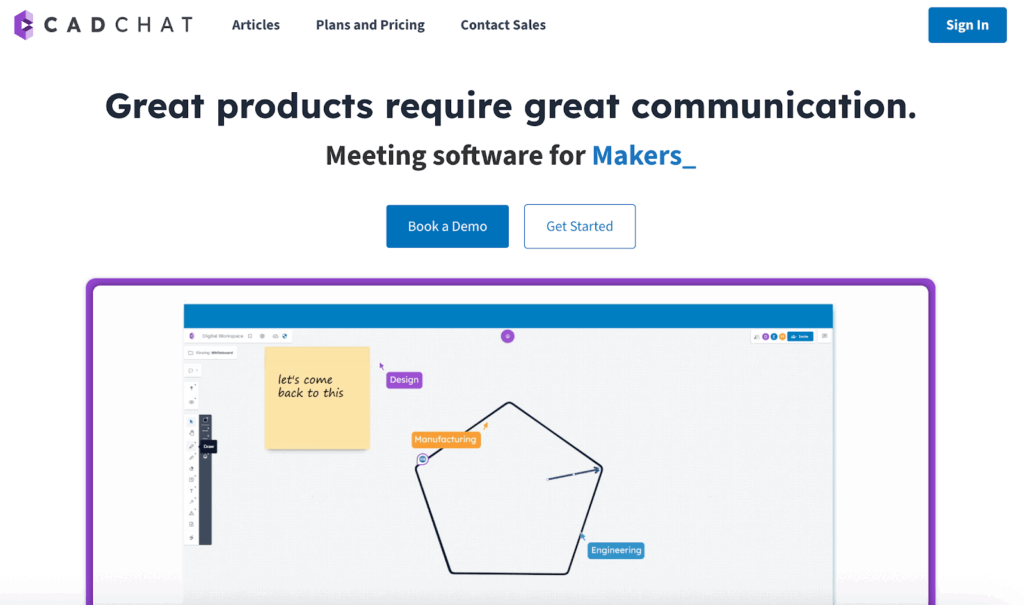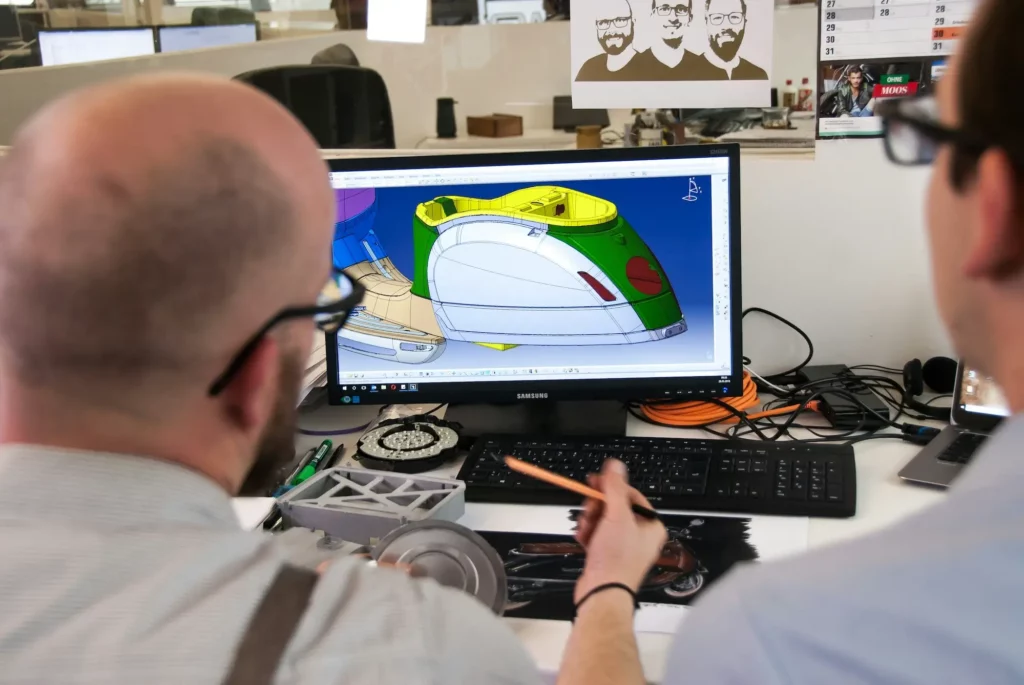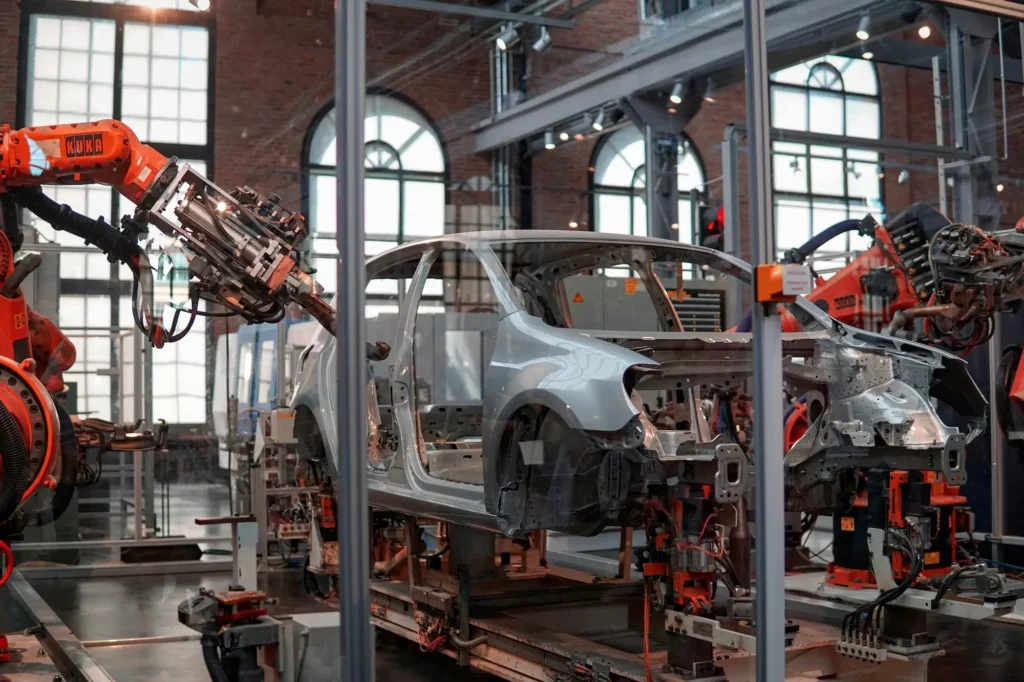An interactive meeting is about taking part. It is not just sitting quietly while the host talks. The focus is on people sharing ideas, asking questions, and joining the conversation. Everyone is encouraged to speak up, say what they think, and add their input.
Both in-person and online meetings can be interactive. In this article, we’ll give you a few handy tips on how to make meetings interactive for your design team, so you can create a space where ideas grow and problems get solved together.
10 Tips on How to Make Your Design Meetings More Interactive
Running a design meeting should feel like a conversation, not a lecture. Here are some tips you can use to make your virtual team meeting more interactive and productive.
1. Work Together on The Meeting Agenda
One of the easiest ways to make a meeting interactive is to build the meeting agenda as a team.
You can ask your team what topics they want to talk about, whether it’s a new design trend, a tool they want to try, or a challenge they’re facing.
When people help shape the topics, they feel more invested and more likely to join the conversation.
This approach works just as well for virtual meetings on video calls as it does for an in-person event or even larger virtual events.
Using a meeting prep template can also help. It gives everyone a place to share suggestions ahead of time, so you collect input before the meeting starts.
By doing this, you set the stage for active participation and make it easier to facilitate participation once everyone is in the room or online.
Contact us today and see how CADchat makes every design review session more meaningful.
2. Keep the Group Small and Manageable
Design meetings often run best when the group is kept small. With fewer participants, it is easier to stay focused on the key topics and give each person time to speak.
A large group can make it harder for team members to share ideas, and the conversation may shift off track.
Limiting the number of attendees creates space for everyone to join in and makes the meetings more interactive.
If your design team is big, think about breaking it into smaller sessions. For example, you could meet with just the product designers and engineers in one session and the project managers in another.
This way, the energy levels stay high and each person has a chance to contribute without feeling lost in the crowd.
When the audience is smaller, people feel more comfortable sharing ideas and asking questions. This helps the team move projects forward faster and makes the meeting feel like a true discussion.
3. Choose the Right Video Conferencing Software
The video conferencing software you use can make a big difference in how interactive a meeting feels.
For example, Slack is a good pick for quick huddles when you only need basic features and fast check-ins. For design teams, this can mean jumping into a short huddle to review a visual, share quick feedback on color choices, or talk through a small update.
Zoom can be used for larger or more formal sessions, like a design showcase or training webinar. You can use their word clouds and spinner wheels to gather opinions in real time.
For product design reviews, CADchat is your best partner. It’s purpose-built for CAD collaboration, giving designers, engineers, manufacturers, and stakeholders a clear way to review CAD files, stay aligned, and make faster decisions.
Picking the right tool helps your team focus less on tech struggles and more on what matters most: working together on ideas.
See how CADchat lets teams comment directly on CAD models during reviews.
4. Start with an Icebreaker
Beginning a meeting with a light activity sets the tone and helps people feel comfortable speaking up. Icebreakers add fun and interactive elements that break down walls and make the team more open to sharing.
Even a few minutes at the start can boost energy and get everyone engaged before diving into the main presentation.
There are many ideas you can try. A quick round of two truths and a lie is simple and encourages participation, even in a virtual setting.
Another option is to ask each person to share a design tool they like using or a project they enjoyed working on in the office.
You could also try a creative warm-up, like sketching a design in one minute and holding it up to the camera.
The goal is not to waste time but to create a moment where everyone feels involved. When people laugh, share, and connect at the start, they are more likely to stay engaged and contribute throughout the meeting.
5. Create Interactive Presentations & Digital Whiteboard
Adding interactive presentations to your design meetings keeps the audience engaged and encourages active input from other members of the team.
A digital whiteboard is a simple way to bring breakout rooms or group discussions to life, giving everyone space to sketch ideas, map workflows, or drop comments.
Tools like Miro and MURAL have digital whiteboards where team members can draw, move notes around, and organize ideas together, no matter where they are.
Google Jamboard is another option for quick sketches or sticky-note sessions, especially if your team already uses Google Workspace.
Platforms like CADchat are great if you’re working on CAD designs. During live sessions, participants can open and edit 3D CAD models together without screen sharing, making the collaboration feel natural and truly interactive.
CADchat also allows participants to flag issues and suggest fixes directly on CAD files. This makes feedback more precise and less likely to get lost in long email threads or meeting notes.
These tools make meetings less about one person presenting and more about building something together.
6. Practice Brainstorming Exercises
Brainstorming is one of the best ways to create new ideas and get everyone involved in the conversation.
A brainstorming session gives the whole group a chance to share, rather than having only one person present their thoughts.
This works well both in-person and in a virtual setting, as long as you give the audience clear prompts and a structure to follow.
There are many exercises you can try. One option is “round-robin,” where each person adds one idea before passing it to the next person in the group.
Another is “mind mapping,” where the team starts with one central concept and branches out with related thoughts.
You can also try “crazy eights,” where participants sketch eight quick ideas in eight minutes and then share them with the group.
The goal is to create a flow of ideas without judgment, so people feel free to contribute. When the audience knows their input matters, the conversation becomes more interactive, and the session produces ideas the team might not have thought of otherwise.
7. Give Space for Discussion
A meeting is not truly interactive if people do not have the time to speak. Giving space for discussion allows everyone to participate, share feedback, and feel part of the decision-making process.
For design teams, this often leads to better ideas since creative work benefits from different points of view.
In remote meetings, this becomes even more important. Remote teams can easily slip into passive listening if the session feels one-sided.
To avoid that, you can pause after presenting a topic, invite questions, or ask a few people directly for their thoughts.
Setting aside time at the end of each agenda point for open discussion also makes the group feel more included. When people know they will have the chance to participate, they listen more closely and come prepared.
It turns the meeting into a shared conversation rather than just a report, which keeps the team more engaged and productive.
Book a demo today and discover how CADchat helps every stakeholder contribute during design reviews.
8. Use Live Polls
Live polls are a simple way to make meetings more engaging and keep the audience involved. They let you ask a question during a session and collect answers from everyone in real time.
Polling tools are easy to use, and many meeting platforms let you add polls directly into the session without breaking the flow.
This helps the team see where people stand on a topic right away. For example, during a design review, you could use live polls to vote on two color options for a new logo. The results show instantly, giving the group a clear direction and sparking more discussion.
Adding polls to your meetings not only keeps people engaged but also makes decision-making faster, since the group can share input in seconds.
9. Q&A sessions
A Q&A session gives the team a chance to ask about a certain topic and dig deeper into points that need more discussion. It keeps the focus on what matters most to the audience and allows the host to address questions directly.
For example, during an engineering standup, after the host presents the model and explains the main design choices, the meeting pauses for a Q&A break.
Team members ask about the durability of the materials, how easy it will be for users to assemble, and whether the shape fits well into different home environments.
The host answers in real time, and the discussion helps the group refine details before moving to the next stage.
This setup works well because it shifts attention from the host to the team, turning the meeting into a shared conversation. It also makes people feel involved, which leads to better participation and stronger design outcomes.
10. Collect Feedback After the Meeting
The conversation should not end when the meeting does. Taking time to collect feedback after the session helps you understand what worked, what could improve, and what topics should carry into the next meeting.
There are many ways to do this. A quick survey can be a fun way to ask for opinions, or you can send a short form where team members rate the meeting and suggest improvements.
Tools like CADchat make this process even smoother. Teams can leave threaded comments directly on 3D models, even after the meeting has ended. All comments stay attached to the relevant CAD file, so there is no need to hunt through long message threads.
Other members can review and respond to these comments on their own schedule, keeping projects moving forward 24/7.
Collecting feedback this way ensures the next meeting builds on the last one, with the whole team aligned and ready to keep creating.
The Value of Making Meetings More Interactive
Making a meeting interactive takes a lot of planning and following certain meeting best practices. But why should you make an effort to make these meetings more interactive?
Here are a few reasons.
- Better idea sharing and collaboration – Everyone has the chance to speak, suggest, and add input, which sparks more creativity.
- Inclusivity – A hybrid team can feel equally involved, no matter where each person joins from.
- Improved problem-solving – Open discussions help the group find solutions faster and from different angles.
- Stronger communication and teamwork – Interactive formats make your meetings feel like a conversation, not a lecture.
- Higher employee engagement – People stay more focused when they can take part, vote, or comment.
- Increased productivity – Meetings become more effective, with clear takeaways and better decisions.
- More enjoyable experience – Team members feel upbeat when they are welcome to join in and shape the discussion.
Host Productive & Interactive Meetings with CADchat

CADchat is a collaboration platform built for design teams that need more than screen sharing. It turns your CAD files into the meeting itself, letting your team meet inside the model, share feedback in context, and keep everything organized long after the call ends.
Whether you’re working with engineers, suppliers, or clients, CADchat makes every session interactive and productive.
Simple Setup, Powerful Collaboration
You can start a meeting directly from your calendar with no installs or complicated setup. Just share a link and you are live in the model with your team.
The CAD file becomes the agenda itself, with real-time views, live cursors, and feedback pinned to the geometry.
When the call ends, all comments and snapshots remain, so you can return the next day and continue right where you left off.
Real Results, Anytime
CADchat helps design teams cut down on scheduling conflicts by reducing unnecessary meetings by up to 30 percent. Work continues smoothly across time zones, making progress possible around the clock.
Since feedback stays attached to the CAD model, miscommunication is reduced, and nothing gets lost.
It also gives both technical and non-technical stakeholders a simple way to join the process and add their perspective.
Flexible Plans For Every Team
The Free Plan includes unlimited team members, unlimited meetings, a 40-minute meeting limit, and spaces that expire after 24 hours.
The Pro Plan, available at $17 per member monthly with annual billing or $19 billed monthly, adds unlimited meeting length, unlimited storage, and spaces that never expire.
For larger organizations, custom enterprise options are also available by contacting the sales team.
FAQs About How to Make Meetings Interactive
How to make the meeting interactive?
To make a meeting interactive, use tools that let people take part, like live polls, Q&A, or quick brainstorming sessions. Keep the flow open so everyone feels comfortable sharing their input.
How do you make meetings more fun?
You can make meetings more fun by adding short icebreakers, encouraging casual chat, or mixing in visuals and light activities. Keeping the tone relaxed helps people feel more engaged.
What are the 4 P’s of effective meetings?
The 4 P’s of effective meetings are purpose, people, process, and product. You need a clear reason for the meeting, the right people in the room, a simple structure to follow, and a useful outcome at the end.
How to make the session interactive?
To make a session interactive, invite participation instead of just talking at people. Ask questions, give space for discussion, and use interactive tools that let everyone contribute in real time.


